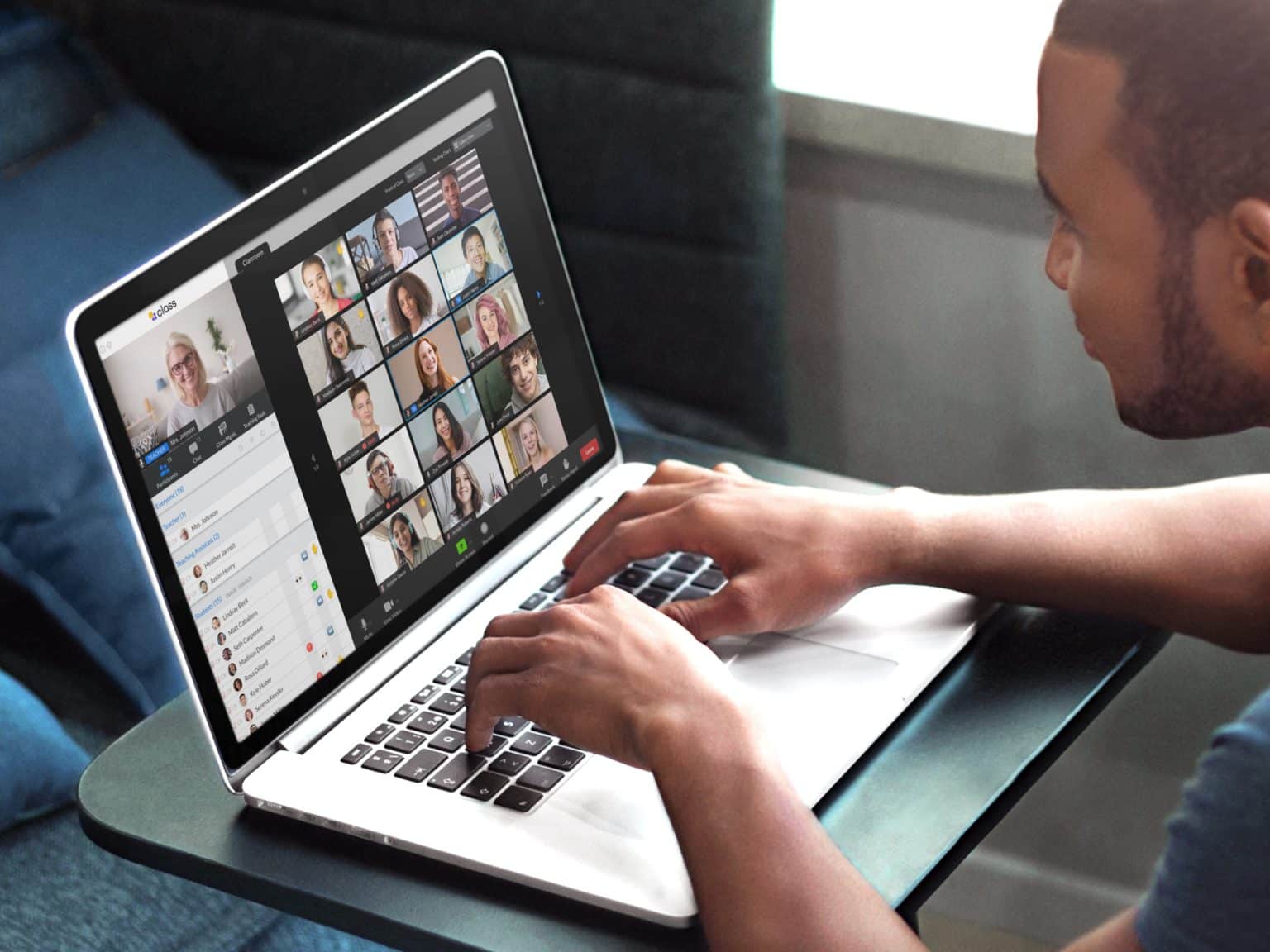
Class is the next generation virtual classroom for K-12, higher education, government agencies, and the workplace. Contact us today to schedule your live demo and see Class in action.

Class is the next generation virtual classroom for K-12, higher education, government agencies, and the workplace. Contact us today to schedule your live demo and see Class in action.

One of the big benefits of blended learning models is that it allows teachers and trainers to reach a wider audience in less time, says Bram Jansen, chief editor of vpnAlert. “Unlike conventional approaches, blended learning does not necessitate the presence of the teacher at all times,” he says. “Traditional classrooms can only hold a certain number of people at any one time.” That clearly became problematic during the pandemic when social distancing and safe spaces were imperatives at all levels of education.
Since those early days of social distancing, teachers, administrators, students, and parents have learned a lot about how various types of blended learning models can help to facilitate—and even improve—the delivery of education.
“Using various models of blended learning is critical to meet the unique and individual needs of every child,” says Julie Morrow, director of leadership advocacy at Achieve3000. “When done correctly, blended learning enables a teacher to facilitate a learning environment where children are inspired to take ownership in their own learning progression by gaining control over their time, pace, place, and path,” she says.
Historically, distance learning often occurred in asynchronous environments, largely because the technology didn’t exist, or wasn’t powerful or user-friendly enough to accommodate synchronous interactions. Today, of course, that is no longer the case. Today’s teachers and students at all levels and in all settings can take advantage of a wide range of blending learning models to meet their unique needs—whether K12 blended learning classrooms, blended college courses or any type of online learning.
Mark Knox is a vertical solutions sales consultant with Sharp NEC Display Solutions. He recently spoke at a virtual education technology conference about some of the blended learning models that are evolving during the pandemic. These models can be adopted and adapted at all levels of learning—from K-12, to higher ed and in corporate learning environments, he says.
With small class sizes, smaller rooms with larger screens can be used effectively to achieve both social distancing and easy access to information and learning tools. “This scenario allows for social distancing within smaller spaces,” says Knox. In this type of environment, he says, it’s important to ensure that students can see elements on the screen clearly without any pixelation issues.

Larger settings, says Knox, have also had to adapt teaching and learning practices by leveraging blended learning strategies and models.
Universities around the country quickly pivoted to provide socially distanced spaces for students while adopting technology to ensure students can comfortably hear, see and interact while not physically together.
Technology today allows students and teachers to interact with each other in hybrid settings—some in the classroom and some remote. The Zoom classroom has become common across all of these settings.
“This is a hybrid situation that is most similar to a traditional learning environment,” Knox says. When screens are mounted or projected to the back of the room, he says, instructors “can stand at the front of the room and still see the faces of all the students in the class.”
Elizabeth Hicks, co-founder of Parenting Nerd, a site that offers parenting advice, product reviews and guides for parents, says that a “self-blend model” can be used in both K-12 and higher ed settings to allow students to complete courses that have been uploaded by instructors that students can access online. It’s a cost-effective solution, she says, allowing hundreds of students to view content at the same time, and to learn at their own pace. The downfalls of this model though, she says, include social isolation, the need for a high level of self-motivation and lack of direct interaction between students and instructors.
A rotation model focuses on switching between different working blended learning models, says Hicks. There’s no need to attempt to apply a one-size-fits-all approach in an environment where many options are available. “Station rotation, lab rotation, flipped classroom, and individual rotation are a few different ways students have to experience in this model,” she says. This gives students experience with a variety of learning models which can help them adjust to any type of blended learning strategies, she says. “Different rotations for different subjects ensure better learning outcomes as every subject is taught using the most suitable rotation model,” says Hicks.
However, Hicks acknowledges, there are some potential downfalls: too many changes can confuse students, and some students may not have the resources to work with different rotation models.
Education at all levels is being done differently these days with many students—and teachers—interacting from home or other virtual environments. In these settings they have the flexibility to arrange their learning spaces and select equipment, like computers, screens, cameras, lighting, etc., to best meet their needs.
Not all of these blended learning models will be right for every learning environment—and not all students will have equal access to the technology they need. The beauty of the flex model of blended learning, though, is that there are a wide range of options and variations to suit individual and instructional needs and preferences.
“Not every individual, job, topic, or organization is a good fit for a blended learning model,” says Jansen. “Consider which strategy would be well for your staff or clients in the same way you consider children’s reading ages when considering books for them,” he recommends. “Employees who are used to working with their hands can hate spending so much time in front of a computer screen. As you would expect, these factors must be taken into account when developing learning strategies and resources.”
While there are many benefits to blended learning classrooms, and many options available, one critical must-have to make it all work is access to the right technology, says Morrow.
“Appropriate digital tools and resources must be provided for every child,” she says. “Without access to the appropriate resources, students are denied adequate access to learning.”
That’s where the Zoom classroom and tools like Class come into play, offering user-friendly, seamless and flexible learning options to serve students in a wide range of settings, regardless of the type of blended learning model being deployed.

Class is the next generation virtual classroom for K-12, higher education, government agencies, and the workplace. Contact us today to schedule your live demo and see Class in action.

Class is the next generation virtual classroom for K-12, higher education, government agencies, and the workplace. Contact us today to schedule your live demo and see Class in action.
Get our insights, tips, and best practices delivered to your inbox

Sign up for a product demo today to learn how Class’s virtual classroom powers digital transformation at your organization.

Features
Products
Integrations